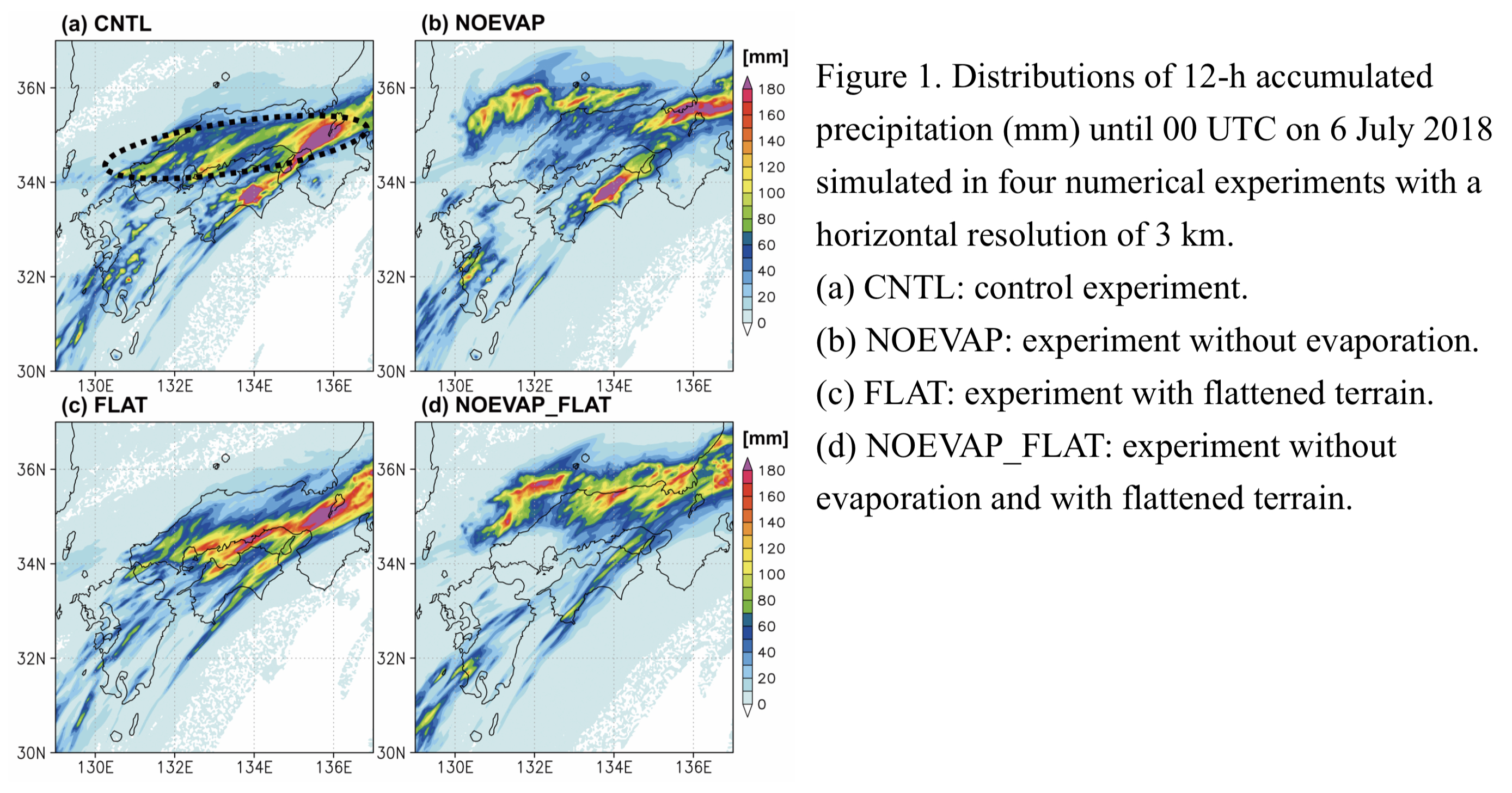Graphical Abstract
Ohara, R., T. Iwasaki, and T. Yamazaki, 2021: Impacts of evaporative cooling from raindrops on the frontal heavy rainfall formation over western Japan on 5-8 July 2018. J. Meteor. Soc. Japan, 99, 1351-1369.
Special Edition on Extreme Rainfall Events in 2017 and 2018,
https://doi.org/10.2151/jmsj.2021-065
Graphical Abstract
NEW GA
Plain Language Summary:
This study examines impacts of evaporative cooling in the heavy rainfall event in early July 2018 to deepen our knowledge about when and how evaporative cooling affects Baiu frontal precipitation systems. Results of sensitivity experiments reveal that the raindrop evaporation maintains the position of the heavy front-induced precipitation by suppressing the northward retreat of the frontal surface.
Highlights:
- A heavy precipitation area extending from the Chugoku region to central Kinki (see dotted ellipses in Fig. 1a) is displaced northward by more than 100 km when raindrop evaporation was turned off (confirmed by comparing Figs. 1a, c with Fig. 1b, d).
- The precipitation mentioned above is not mainly formed by updrafts along mountain slopes, but by updrafts above a frontal surface at a potential temperature of 300 K.
- Methods of the cold airmass analysis are used to examine impacts of evaporative cooling on the position of the frontal surface by quantifying the cold air below the frontal surface.
- The exclusion of raindrop evaporation in the numerical experiment considerably reduces the cold airmass amounts over western Japan and results in the northward retreat of the frontal surface.







